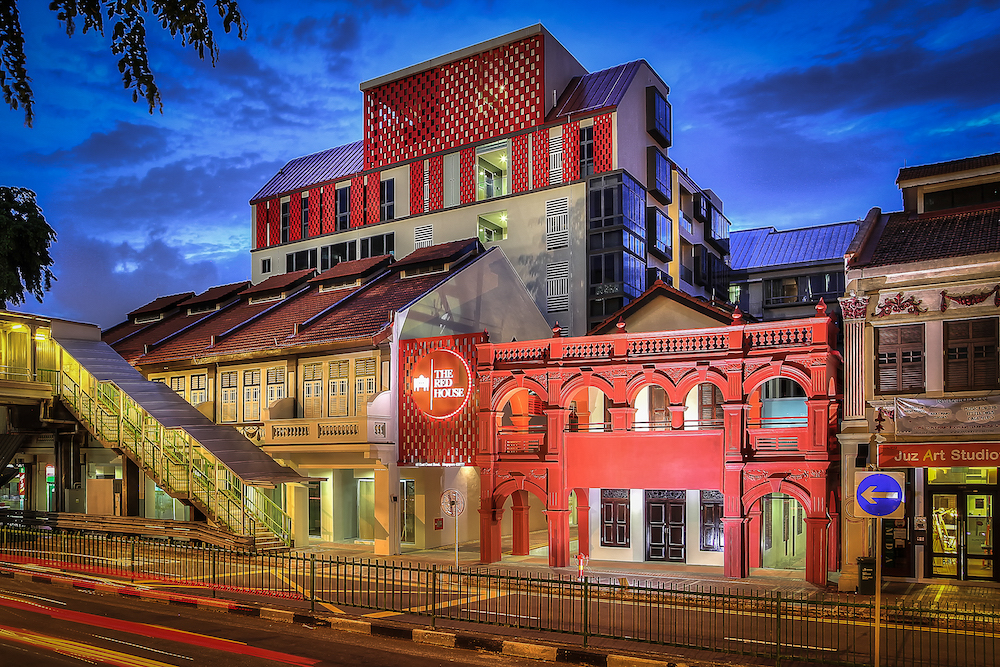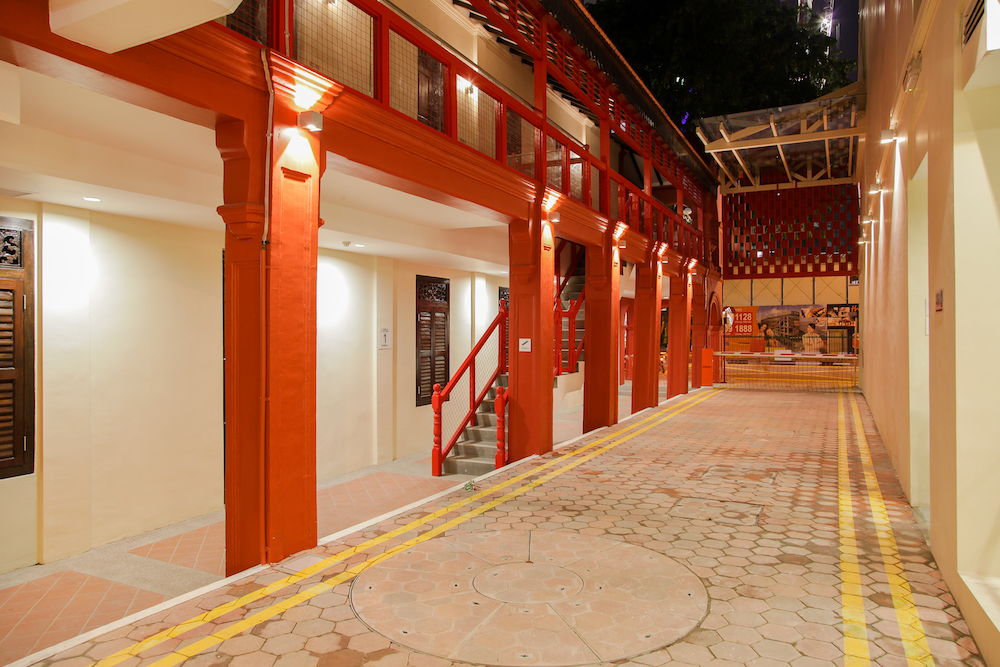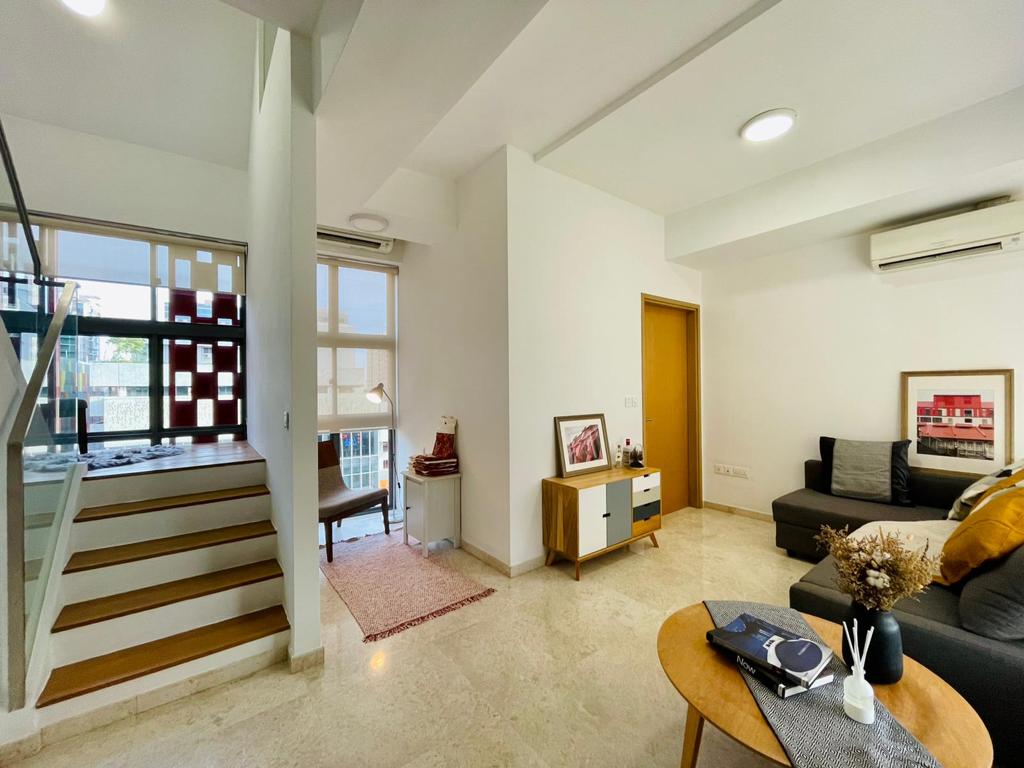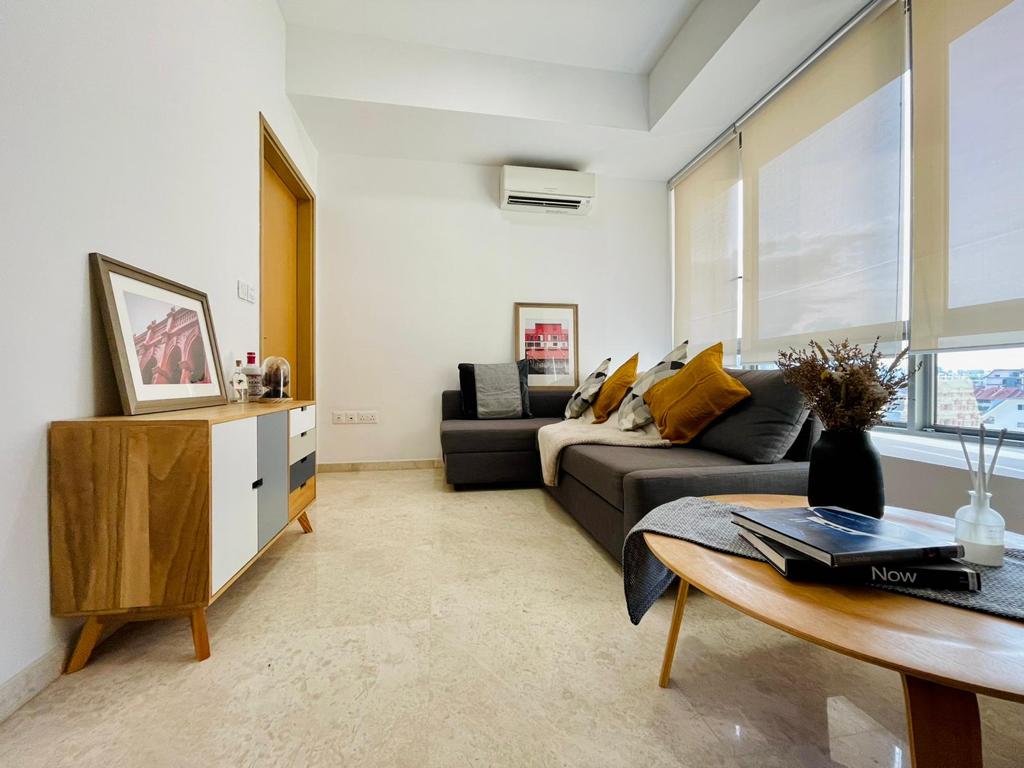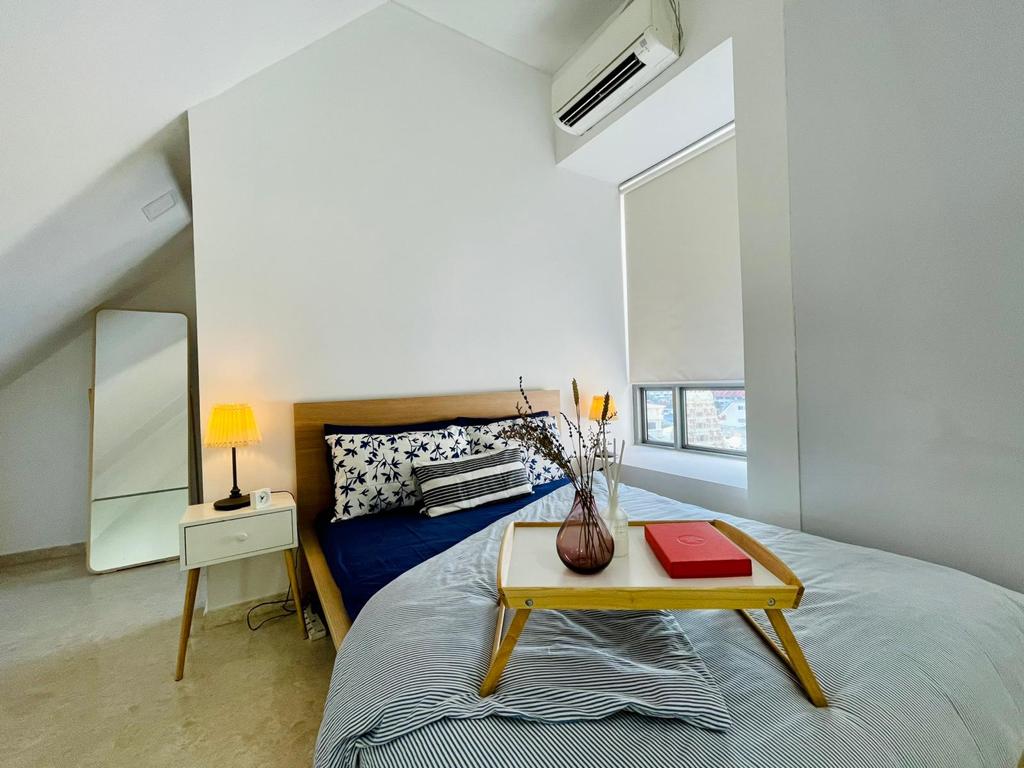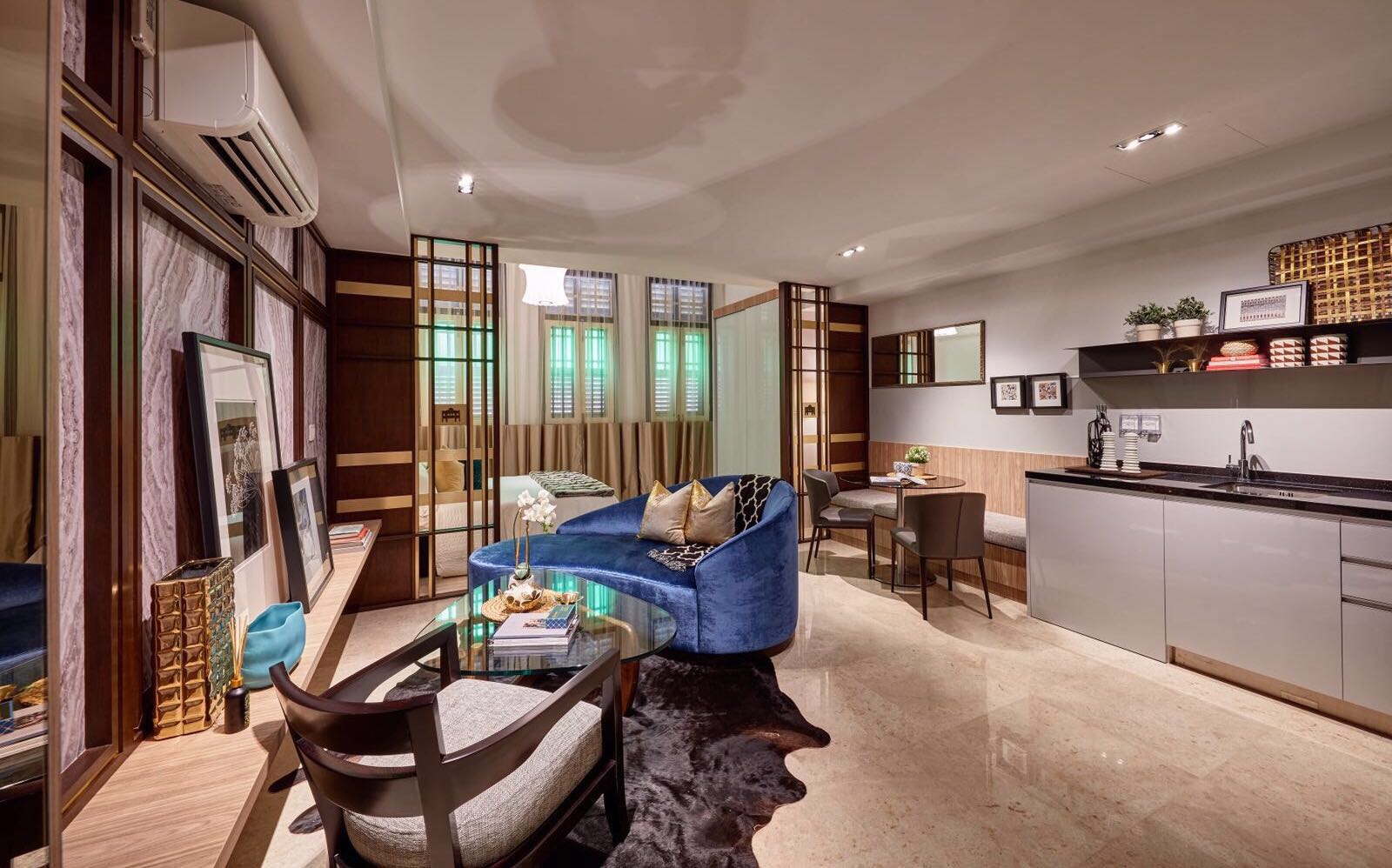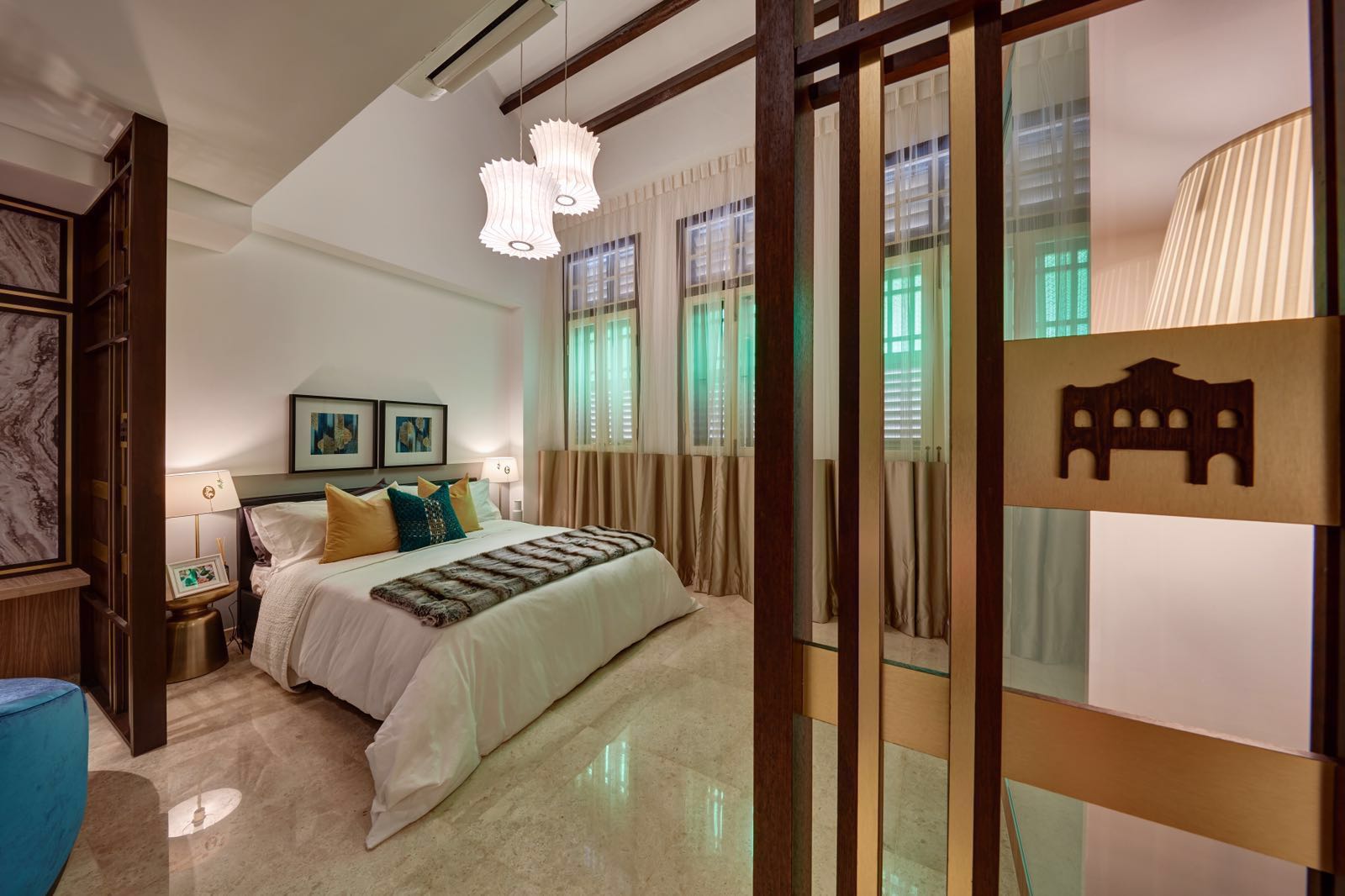Not many know that The Red House is an Islamic charitable trust or a Wakaf. On 23 May 1957, a wealthy Arab Muslim lady, Sheriffa Zain Alsharoff Binte Syed Mohamed Bin Ahmad Alsagoff, bequeathed a row of shophouse including the iconic Red House along East Coast Road, which were earlier purchased by her husband, Syed Abdul Rahman Taha Alsagoff (Engku Aman). As the new owner, they allowed businesses at these shophouses, including the famous Katong Bakery & Confectionery Co. operating at the Red House, to continue.
No one really knows the reason The Red House was painted red, but many believed it has something to do with the Chinese custom that ‘red’ brings good luck.
The Red House development consists a total of 42 residential units available in 3 exquisite classes, ranging from Residences, Suites to Lofts, 5 commercial units and an old conserved bakery. In order to sustain and unlock the optimal value of wakaf properties and continue wakaf development as well as support conservation efforts to protect our architectural heritage through this project, Warees created a unique institutional investments initiative (3I) which served as the trusted platform to allow our community institutions to participate and benefit from the returns for social needs.
The institutional investments initiative was a new financing method introduced by Warees which transforms and sustains asset growth within the community. The 3 key thrusts driving the institutional investments initiative are:
PART ONE OF 3I
The first component of 3I features the investments from institutions within the Muis Group, namely Wakaf Ilmu, Dana Pembangunan, YAL Saif Charity Trust and Madrasah Aljunied Al-Islamiah Management Committee. These entities invested $8.95 Million in exchange for 7 units of the Red house for a leasehold period of 99 years. This direct participation in the endowment project marked a first in institutional participation and was an opportunity for these institutions within the Muis group to acquire the use of wakaf real estate assets to provide recurring income for the benefit of the community.
The income from these investments are used by these entities for charitable and educational purposes namely:-
PART TWO OF 3I
The second component of 3I features 5 mosques participating in a joint-financing and construction agreement for the purpose of funding the development of the Red House project. These mosques were Al-Mukminin, An-Nur, Assyakirin, Darul Ghufran and Haji Muhammad Salleh (Palmer Road). This social investment is also an opportunity for mosques to optimise their returns from cash assets in order to fund more socio-religious programmes.
The total sum of the joint-financing into the Red House Development from the 5 mosques was $5 million. Each of the 5 participating mosques contributed $1 million over 2 tranches. Capital was guaranteed and the investment tenure was for 2 years.
Each mosque benefited as the returns of 2.1% per annum (with semi-annual payout of returns) were higher than the prevailing fixed deposit rate at that time. The joint-financing arrangement provided mosques with the opportunity to participate in the financing of wakaf development projects and derive higher returns from their cash assets. This also marked the first time where a wakaf development project was financed using funds within the Muis group, rather than the usual alternative of bank financing.
East Coast Road
